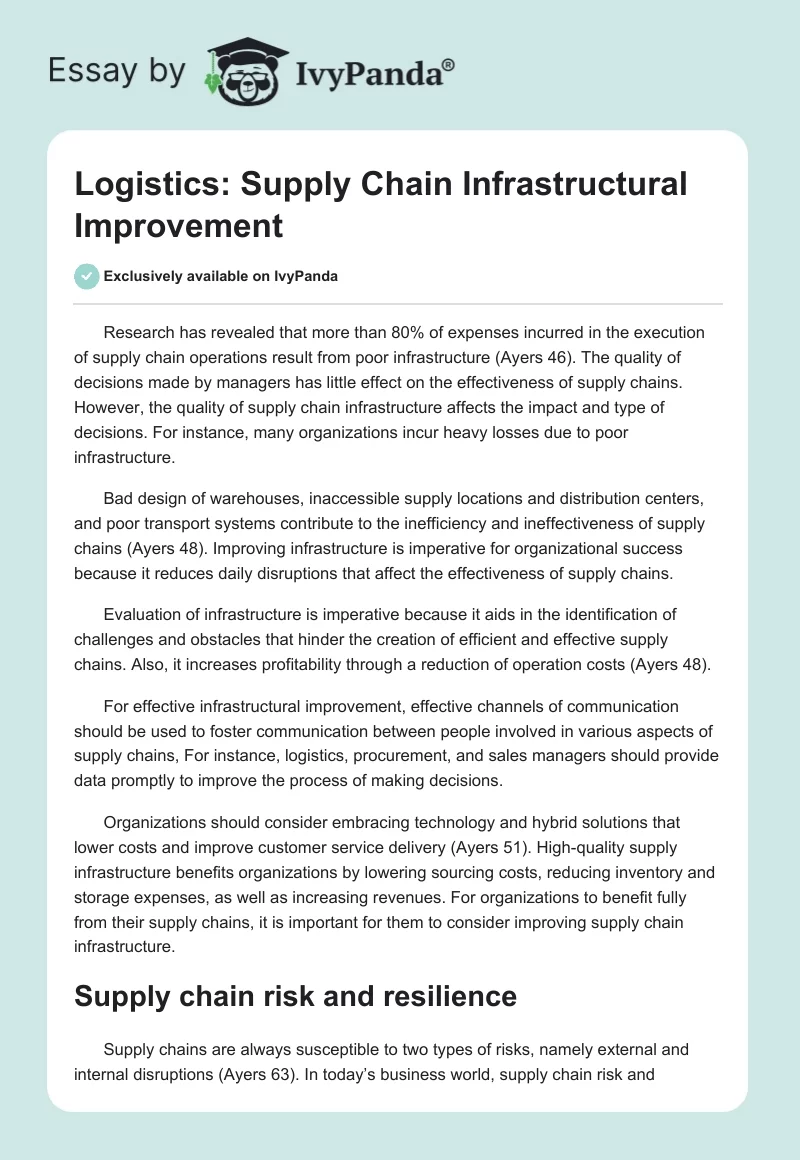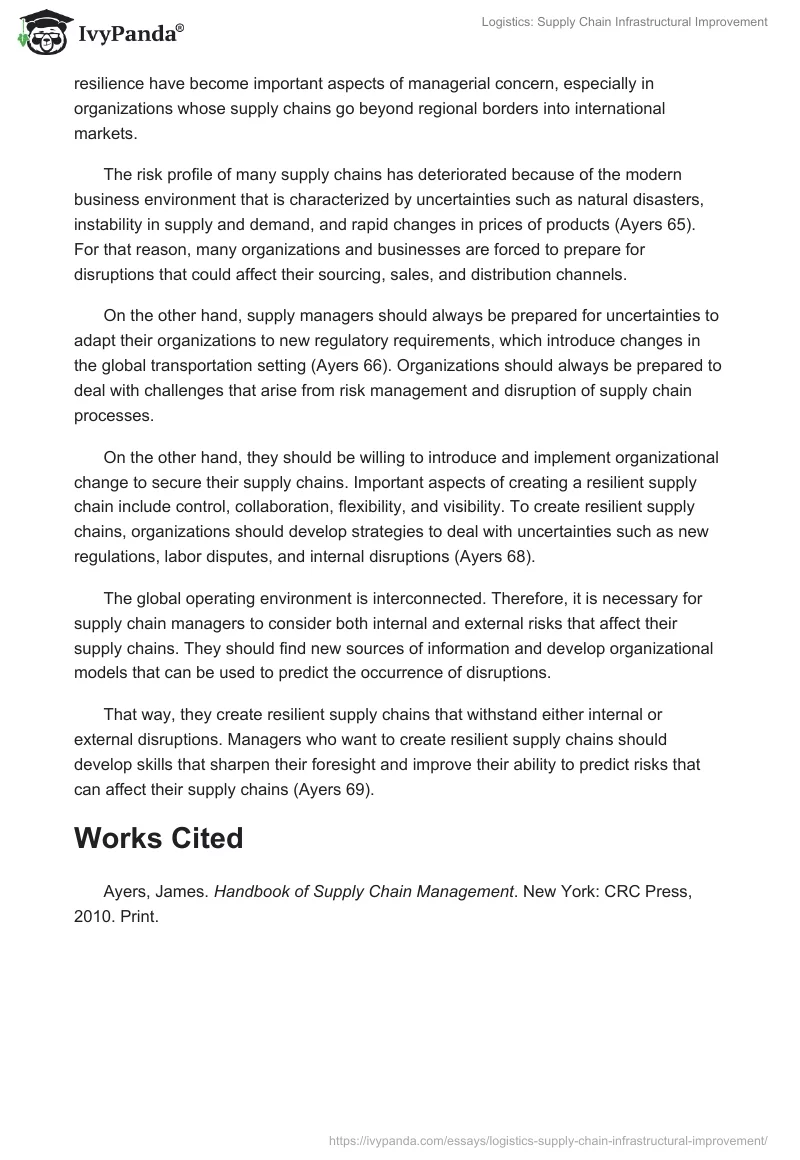Research has revealed that more than 80% of expenses incurred in the execution of supply chain operations result from poor infrastructure (Ayers 46). The quality of decisions made by managers has little effect on the effectiveness of supply chains. However, the quality of supply chain infrastructure affects the impact and type of decisions. For instance, many organizations incur heavy losses due to poor infrastructure.
Bad design of warehouses, inaccessible supply locations and distribution centers, and poor transport systems contribute to the inefficiency and ineffectiveness of supply chains (Ayers 48). Improving infrastructure is imperative for organizational success because it reduces daily disruptions that affect the effectiveness of supply chains.
Evaluation of infrastructure is imperative because it aids in the identification of challenges and obstacles that hinder the creation of efficient and effective supply chains. Also, it increases profitability through a reduction of operation costs (Ayers 48).
For effective infrastructural improvement, effective channels of communication should be used to foster communication between people involved in various aspects of supply chains, For instance, logistics, procurement, and sales managers should provide data promptly to improve the process of making decisions.
Organizations should consider embracing technology and hybrid solutions that lower costs and improve customer service delivery (Ayers 51). High-quality supply infrastructure benefits organizations by lowering sourcing costs, reducing inventory and storage expenses, as well as increasing revenues. For organizations to benefit fully from their supply chains, it is important for them to consider improving supply chain infrastructure.
Supply chain risk and resilience
Supply chains are always susceptible to two types of risks, namely external and internal disruptions (Ayers 63). In today’s business world, supply chain risk and resilience have become important aspects of managerial concern, especially in organizations whose supply chains go beyond regional borders into international markets.
The risk profile of many supply chains has deteriorated because of the modern business environment that is characterized by uncertainties such as natural disasters, instability in supply and demand, and rapid changes in prices of products (Ayers 65). For that reason, many organizations and businesses are forced to prepare for disruptions that could affect their sourcing, sales, and distribution channels.
On the other hand, supply managers should always be prepared for uncertainties to adapt their organizations to new regulatory requirements, which introduce changes in the global transportation setting (Ayers 66). Organizations should always be prepared to deal with challenges that arise from risk management and disruption of supply chain processes.
On the other hand, they should be willing to introduce and implement organizational change to secure their supply chains. Important aspects of creating a resilient supply chain include control, collaboration, flexibility, and visibility. To create resilient supply chains, organizations should develop strategies to deal with uncertainties such as new regulations, labor disputes, and internal disruptions (Ayers 68).
The global operating environment is interconnected. Therefore, it is necessary for supply chain managers to consider both internal and external risks that affect their supply chains. They should find new sources of information and develop organizational models that can be used to predict the occurrence of disruptions.
That way, they create resilient supply chains that withstand either internal or external disruptions. Managers who want to create resilient supply chains should develop skills that sharpen their foresight and improve their ability to predict risks that can affect their supply chains (Ayers 69).
Works Cited
Ayers, James. Handbook of Supply Chain Management. New York: CRC Press, 2010. Print.


